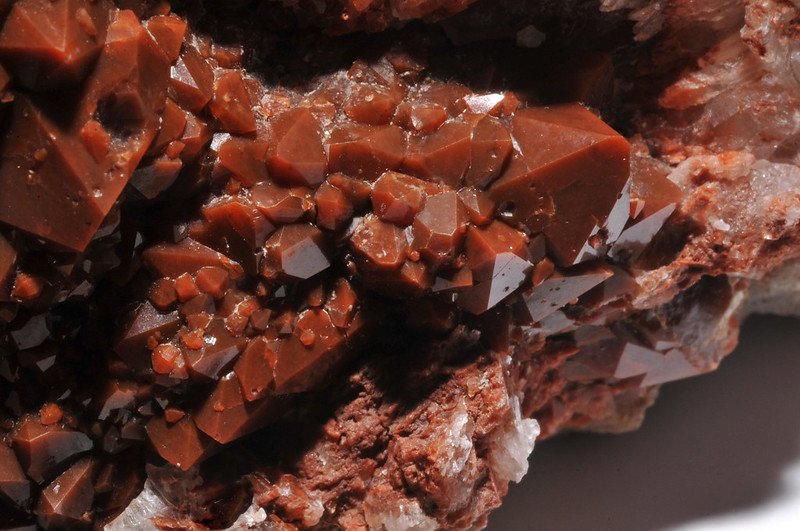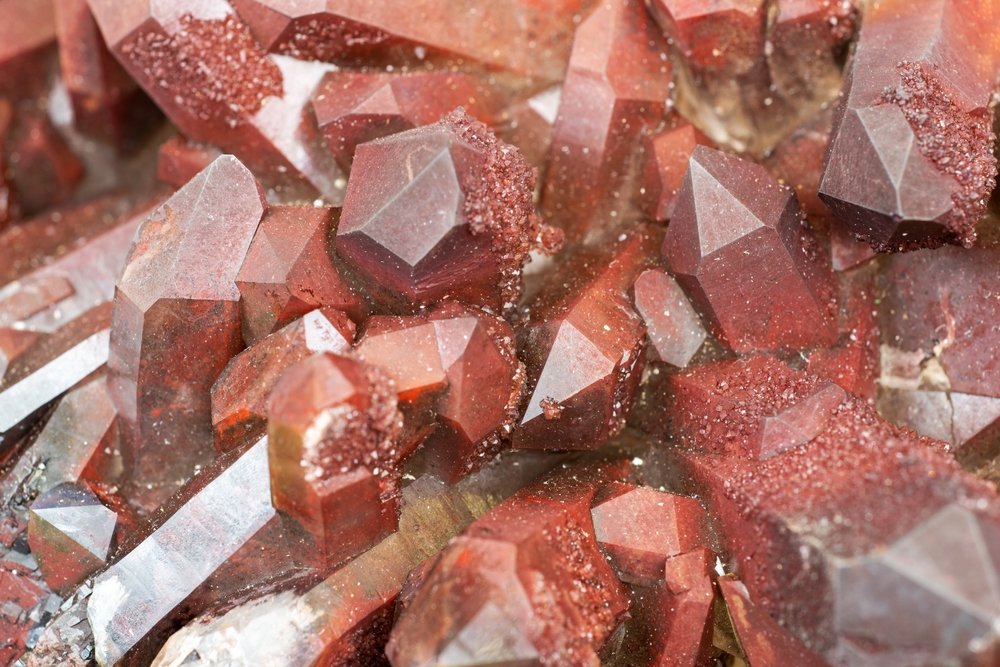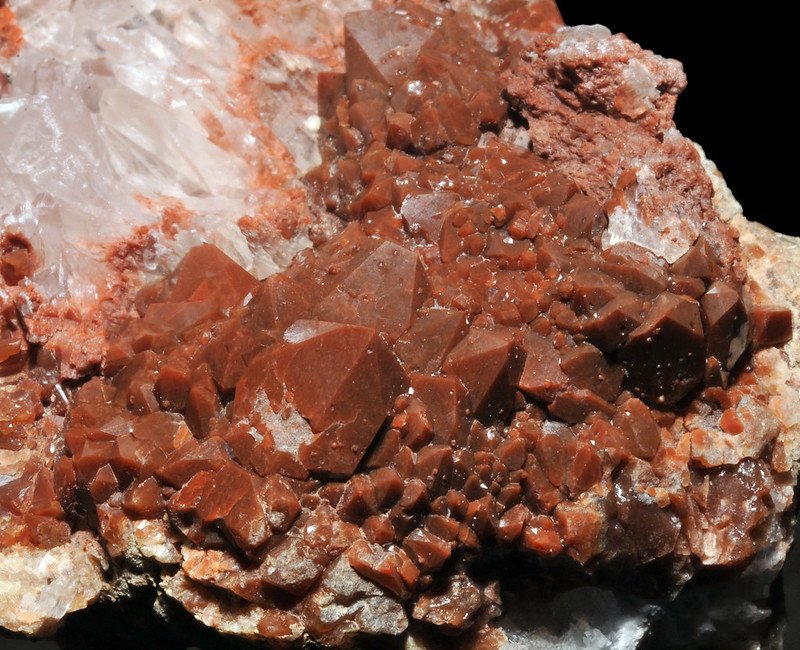Ferruginous quartz, often called hematoid quartz, is a variety of crystallized silica that comes with included red specks or a deep burgundy or orange coloration. Not many people know a whole lot about this variety of quartz, but it’s certainly attractive!
Let’s dive in and I’ll take you on a deep dive so that you learn more in our guide to ferruginous quartz.
What is Ferruginous Quartz?
Most quartz is dug out of the ground with some form of iron staining. This usually takes the form of orange to rust-colored particles that can be quite hard to remove from the crystals with some form of chemical compound. While this is an iron-based coating, it’s not what makes ferruginous quartz.
Instead, ferruginous quartz forms in one of two different ways: it can have included hematite or it can have included limonite. Both of these are minerals that contain iron and are quite common throughout the Earth’s crust. In some cases, the red variations are sold under the name “fire quartz” owing to the mineral’s deep red coloration.

This mineral is often massive, being a mass of interlocking and vaguely red crystals. The crystal points and clusters that are generally sought out can be quite fine, however, with all of the usual variations that we see in quartz crystals.
While it’s often called “hematoid quartz” this mineral is also found as an inclusion in a mineral commonly called “strawberry quartz”. In the case of these included varieties, the smaller nature of the inclusions reveals itself on closer inspection.
In general, ferruginous quartz won’t be transparent. It most often presents with solid color, rendering the quartz either opaque or only semi-translucent even with a light source behind it. The stones themselves are usually valued based on both color and clear crystal formation. While almost all will be interlocked in clusters, more distinct clusters are generally seen as the more valuable material.
It’s also occasionally seen cut into cabochons, spheres, and other decorative forms. In these cases, it will generally present as a red and white material.
Those crystals which are just coated with mineral compounds, even the very thick ones like some goethite-limonite coated specimens, are their own thing although they’ll sometimes be labeled erroneously.

Is There Fake Ferruginous Quartz?
So far as I can tell, fakes of this material aren’t common. That said, tumbles, spheres, and polished forms are generally a bit suspect, so you need to be careful of where you purchase them.
What does seem to happen fairly often is the heat treatment of the material. By heating and then cooling lower-grade quartz it can greatly enhance the coloration of the stone. It can also create a crackled appearance similar to that found in the commonly altered “Dragon Vein Agate” sold with dye interspersed in the cracks.
As with any form of quartz, the big thing is to make sure you can differentiate it from glass. In this case, hardness testing is the easiest way.
Is It Different From Ferruginous Quartzite?
Yes, quite a bit. In this case, the rocks are barely comparable at all although I have seen the occasional suspicious, red piece labeled this way.
Quartzite is a metamorphic stone, which occurs during a different part of the lifecycle of the rock than the (usually) sedimentary origin that quartz is known for.
Ferruginous quartzite has an interesting origin, but as a rock, it’s not much different than any other non-distinct river cobble. It’s found often in Virginia and unlikely to be confused with any other type of quartz.
Where Can Ferruginous Quartz Be Found?

If you search for ferruginous quartz, you’ll often find long lists of pretty red crystals. While these are gorgeous, and a good example of the mineral, these generally come from areas outside of the United States. Morocco and France, for instance, both produce exceptional specimens of these crystals.
There are still a few places you can take a look at in the United States, and even find some great specimens of your own. Just don’t expect them to quite live up to the same coloration standards as you’ll see in ferruginous quartz.
The following states are known to contain samples of this material:
- California
- Washington
- Pennsylvania
- Utah
- New Hampshire
- Montana
While not the most common form of quartz out there, it often occurs in large masses in the areas where it occurs so it’s not overly difficult to find if you’re in the right area.
In areas where it’s found, the digging is generally close to the same as any other variety. It just may be a bit harder to recognize exactly what you’ve got in your hands before you give it a good cleaning to remove clay particles and any iron staining that’s already occurred on the exterior of the quartz.
- Online rock and mineral club for collectors of all levels!
- Find community with like-minded rock and mineral enthusiasts.
- Monthly Giveaways!
- Free Access to Entire Digital Library of Products (annual memberships)


